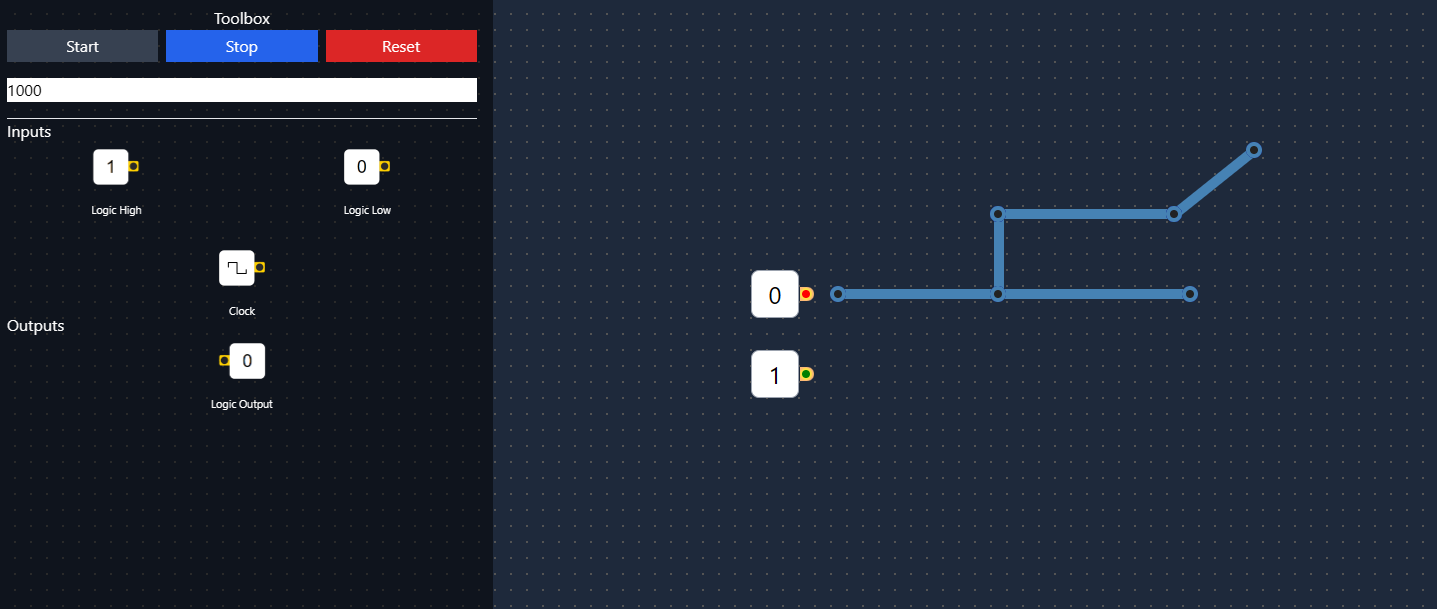Overview: This project involves the development of a Logic Gate Simulator designed to allow users to create and test low-end circuits and logic simulations visually. The core objective is to provide a tool that aids in the understanding and application of logic gate functions and combinations, facilitating the design of complex logic circuits.
Objectives:
Development of Basic Logic Gate Functions: Implement fundamental logic gates (AND, OR, NOT, XOR, etc.) to enable basic circuit construction and simulation.
User Interface (UI) Enhancement: Design an intuitive and interactive UI that allows users to effortlessly place, connect, and simulate different logic gates on a virtual canvas.
- Simulation Capabilities: Develop real-time simulation features that can show the logical state of each component within the circuit, aiding in debugging and learning.
- Advanced Logic Functions: Introduce clocks, counters, and memory elements to support more complex circuit designs.
- Toward Turing Completeness: Extend the simulator's capabilities to support the creation of a Turing-complete computer, demonstrating the tool's potential to simulate a complete computing machine.
Current Progress:
The project is currently in the early stages of development. A basic user interface has been established where users can drag and drop logic gates (represented as 1 for logic high, and 0 for logic low). The connections between these components can be manipulated to form basic circuits. A rudimentary simulation functionality is in place, which currently demonstrates simple logic outputs based on the configuration of inputs and gate types.
Future Plans:
Enhance the variety and complexity of logic components available to the user. Improve the simulation engine to include timing analysis and more complex interactive features. Develop a library of preset circuits that users can utilize as learning tools or starting points for their designs. Implement save, load, and share functions to facilitate collaborative work and community engagement.
Conclusion:
I aim for this tool to become a comprehensive educational tool for students and enthusiasts beginning their journey into electronics and computer science. By eventually achieving the capability to simulate a Turing-complete computer, the project will not only serve educational purposes but also become a powerful tool for prototype development and testing in digital electronics.
